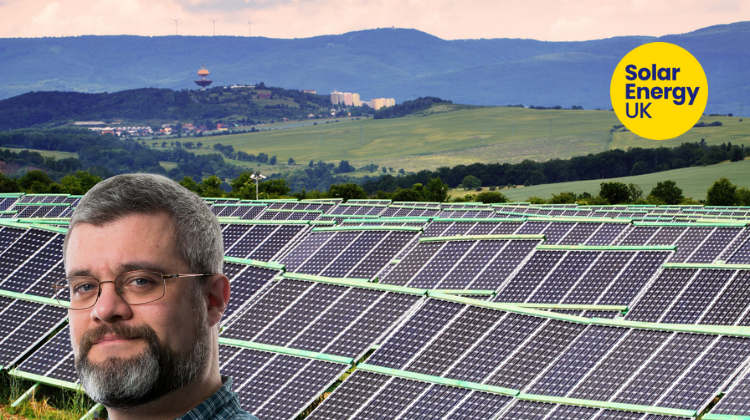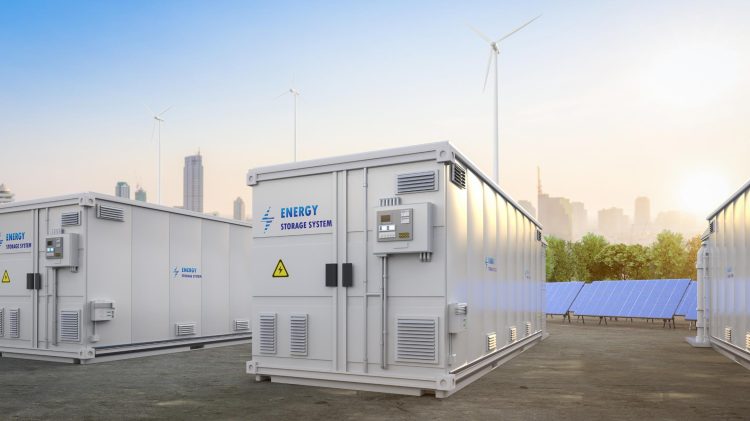100MW / 331MWh battery storage system is now operational, forming a key part of BW ESS’ UK investment programme.


100MW / 331MWh battery storage system is now operational, forming a key part of BW ESS’ UK investment programme.

The UK’s solar and energy storage sector faces uncertainty due to the proposed capacity limits for 2035. Gareth Simkins, Senior Communications Adviser at Solar Energy UK, warns about the impact on investment and the country’s competitiveness compared to other European markets in conversation with Strategic Energy Europe. The industry is seeking regulatory and technological solutions to ensure its continued growth.

5,000 tons per year of green H2 produced by the OranjeWind offshore wind farm developed by TotalEnergies (50%). 450,000 tons per year reduction of CO2 emissions from TotalEnergies’ Anvers and Zeeland refineries. An electrolyzer jointly developed in the Netherlands with Air Liquide to supply the Zeeland refinery. A tolling agreement on a second electrolyzer built and operated in partnership with Air Liquide to supply Antwerp platform.

Follow the Storage, Renewable and Electric Vehicles Integration Forum today from 1:00 PM (Central European Time). A free virtual event where industry leaders will discuss the future of energy and electric mobility. The forum will feature renowned companies such as Jinko Solar, and Black&Veatch.Don’t miss it!

A Baringa Partners report reveals that wind energy displaced 13.2 TWh of fossil-fuelled generation in 2024, saving over €1.2 billion in gas and carbon costs. However, experts warn that Ireland’s grid limitations prevented even greater savings.

The Federal Council of Germany has approved the Solarspitzen (Peak Solar Law), establishing new rules for financing photovoltaic installations and promoting the installation of smart meters. The German solar sector faces a major shift with the implementation of this regulation, aimed at stabilising the market and improving solar energy integration into the electricity grid.

The new submarine power line will link the North of England with Scotland.

The new regulatory framework aims to improve the integration of renewable energy into the German electricity grid. However, experts warn of its possible effects on the growth of certain sectors. “The regulatory changes aim to remove barriers to the expansion of solar energy and energy storage, but they will not have a significant impact on the pace of new photovoltaic installations,” says Carsten Körnig, CEO of Bundesverband Solarwirtschaft eV (BSW), to Strategic Energy Europe.

The procedure, managed by the Federal Network Agency, awarded 242 solar projects in its first segment with a total bid volume of 2,149,708 kW. The auction marks a new step in the implementation of the Solar Package I, with significant adjustments in pricing and regulatory criteria.

The UK solar industry warns that current energy policies could stall solar and battery storage development after 2030, jeopardising £26 billion in investments. Solar Energy UK’s letter urges the Government to revise capacity limits to prevent higher energy costs and a potential industry slowdown.

With a record 62.7% of renewable energy in its electricity mix, Germany is making strong progress in renewables. However, Irina Peltegova, Senior Green Power Market Analyst at Veyt, tells Strategic Energy Europe that the country faces key challenges in storage, price volatility, and new renewable energy support schemes. PPAs are emerging as an increasingly attractive alternative for the sector.

The country generates more renewable energy than it can consume, but the lack of grid infrastructure threatens the development of new projects. “Much of what we generate needs to be exported, but the grid connection is not ready for that,” warns John MacAskill, Group Growth Director at ABL Group, in a conversation with Strategic Energy Europe. In 2025, Scotland’s grid constraints are expected to cost nearly £2 billion in compensation payments.

The newly published 2025 Site Development Plan by the Federal Maritime and Hydrographic Agency (BSH) of Germany outlines a roadmap to achieve 40 gigawatts of offshore wind capacity by 2034 and lays the groundwork for 70 gigawatts by 2045. Additional areas have been identified in the North Sea and Baltic Sea through cooperation with Denmark and the Netherlands.

The UK government is moving forward with its Clean Power 2030 Action Plan and preparing for the AR7 auction, which will be crucial for the development of wind and solar energy in the country. A record capacity of new generation is expected in a year that will shape the energy transition. Kumara Rathnam, Senior Analyst at Veyt, shared his perspective with Strategic Energy Europe on the challenges and opportunities facing the sector.

The United Kingdom reached a record price of €1,159/MWh on January 22nd, highlighting the flaws of an energy system dependent on gas and disconnected from Europe. Meanwhile, on the continent, prices remained between €159 and €180/MWh, emphasizing the advantages of integration and flexibility in electricity markets. Sofía Núñez Mier and Julio Del Pino shared their perspective on this issue with Strategic Energy Europe.

The decision to temporarily postpone Lithuania’s second offshore wind auction highlights tensions between the objectives of stabilising electricity prices and the need to attract foreign investment. Linas Sabaliauskas, Managing Director of the Lithuanian Wind Power Association (LVEA), told Energía Estratégica España that the measure has limited short-term impact but exposes structural vulnerabilities in the country’s energy strategy.

Oxan Energy, in collaboration with SNOW, will develop the Saare 1 wind farm, located 60 km off the coast of Saaremaa Island. This 900 MW project is key to Estonia’s goal of achieving 100% renewable energy and enhancing its energy independence.

The shift in priorities in the United States towards oil & gas and artificial intelligence presents both challenges and opportunities for the renewable energy industry, particularly in Europe, where the wind energy sector and supply chain could benefit from eased competition.

The UK government has announced the launch of AR7, the upcoming Contracts for Difference auction, aiming to overcome the challenges of previous rounds and set a new standard for renewable energy. This initiative seeks to secure up to 50 GW of offshore wind energy by 2030, an ambitious goal that hinges on immediate strategic decisions.

By the end of 2024, Denmark surpassed 4 GW of installed solar capacity, marking a significant step toward its goal of reaching 20 GW by 2030. However, regulatory challenges and the need to expedite installation permits remain critical obstacles to maintaining the necessary growth pace.

In 2024, An Bord Pleanála approved 10 wind farms totalling 717 MW, falling short of meeting climate objectives. Meanwhile, Ireland has announced its second offshore wind auction, which could add 900 MW in 2025, marking a critical step towards its renewable energy targets.

100MW / 331MWh battery storage system is now operational, forming a key part of BW ESS’ UK investment programme.

The UK’s solar and energy storage sector faces uncertainty due to the proposed capacity limits for 2035. Gareth Simkins, Senior Communications Adviser at Solar Energy UK, warns about the impact on investment and the country’s competitiveness compared to other European markets in conversation with Strategic Energy Europe. The industry is seeking regulatory and technological solutions to ensure its continued growth.

5,000 tons per year of green H2 produced by the OranjeWind offshore wind farm developed by TotalEnergies (50%). 450,000 tons per year reduction of CO2 emissions from TotalEnergies’ Anvers and Zeeland refineries. An electrolyzer jointly developed in the Netherlands with Air Liquide to supply the Zeeland refinery. A tolling agreement on a second electrolyzer built and operated in partnership with Air Liquide to supply Antwerp platform.

Follow the Storage, Renewable and Electric Vehicles Integration Forum today from 1:00 PM (Central European Time). A free virtual event where industry leaders will discuss the future of energy and electric mobility. The forum will feature renowned companies such as Jinko Solar, and Black&Veatch.Don’t miss it!

A Baringa Partners report reveals that wind energy displaced 13.2 TWh of fossil-fuelled generation in 2024, saving over €1.2 billion in gas and carbon costs. However, experts warn that Ireland’s grid limitations prevented even greater savings.

The Federal Council of Germany has approved the Solarspitzen (Peak Solar Law), establishing new rules for financing photovoltaic installations and promoting the installation of smart meters. The German solar sector faces a major shift with the implementation of this regulation, aimed at stabilising the market and improving solar energy integration into the electricity grid.

The new submarine power line will link the North of England with Scotland.

The new regulatory framework aims to improve the integration of renewable energy into the German electricity grid. However, experts warn of its possible effects on the growth of certain sectors. “The regulatory changes aim to remove barriers to the expansion of solar energy and energy storage, but they will not have a significant impact on the pace of new photovoltaic installations,” says Carsten Körnig, CEO of Bundesverband Solarwirtschaft eV (BSW), to Strategic Energy Europe.

The procedure, managed by the Federal Network Agency, awarded 242 solar projects in its first segment with a total bid volume of 2,149,708 kW. The auction marks a new step in the implementation of the Solar Package I, with significant adjustments in pricing and regulatory criteria.

The UK solar industry warns that current energy policies could stall solar and battery storage development after 2030, jeopardising £26 billion in investments. Solar Energy UK’s letter urges the Government to revise capacity limits to prevent higher energy costs and a potential industry slowdown.

With a record 62.7% of renewable energy in its electricity mix, Germany is making strong progress in renewables. However, Irina Peltegova, Senior Green Power Market Analyst at Veyt, tells Strategic Energy Europe that the country faces key challenges in storage, price volatility, and new renewable energy support schemes. PPAs are emerging as an increasingly attractive alternative for the sector.

The country generates more renewable energy than it can consume, but the lack of grid infrastructure threatens the development of new projects. “Much of what we generate needs to be exported, but the grid connection is not ready for that,” warns John MacAskill, Group Growth Director at ABL Group, in a conversation with Strategic Energy Europe. In 2025, Scotland’s grid constraints are expected to cost nearly £2 billion in compensation payments.

The newly published 2025 Site Development Plan by the Federal Maritime and Hydrographic Agency (BSH) of Germany outlines a roadmap to achieve 40 gigawatts of offshore wind capacity by 2034 and lays the groundwork for 70 gigawatts by 2045. Additional areas have been identified in the North Sea and Baltic Sea through cooperation with Denmark and the Netherlands.

The UK government is moving forward with its Clean Power 2030 Action Plan and preparing for the AR7 auction, which will be crucial for the development of wind and solar energy in the country. A record capacity of new generation is expected in a year that will shape the energy transition. Kumara Rathnam, Senior Analyst at Veyt, shared his perspective with Strategic Energy Europe on the challenges and opportunities facing the sector.

The United Kingdom reached a record price of €1,159/MWh on January 22nd, highlighting the flaws of an energy system dependent on gas and disconnected from Europe. Meanwhile, on the continent, prices remained between €159 and €180/MWh, emphasizing the advantages of integration and flexibility in electricity markets. Sofía Núñez Mier and Julio Del Pino shared their perspective on this issue with Strategic Energy Europe.

The decision to temporarily postpone Lithuania’s second offshore wind auction highlights tensions between the objectives of stabilising electricity prices and the need to attract foreign investment. Linas Sabaliauskas, Managing Director of the Lithuanian Wind Power Association (LVEA), told Energía Estratégica España that the measure has limited short-term impact but exposes structural vulnerabilities in the country’s energy strategy.

Oxan Energy, in collaboration with SNOW, will develop the Saare 1 wind farm, located 60 km off the coast of Saaremaa Island. This 900 MW project is key to Estonia’s goal of achieving 100% renewable energy and enhancing its energy independence.

The shift in priorities in the United States towards oil & gas and artificial intelligence presents both challenges and opportunities for the renewable energy industry, particularly in Europe, where the wind energy sector and supply chain could benefit from eased competition.

The UK government has announced the launch of AR7, the upcoming Contracts for Difference auction, aiming to overcome the challenges of previous rounds and set a new standard for renewable energy. This initiative seeks to secure up to 50 GW of offshore wind energy by 2030, an ambitious goal that hinges on immediate strategic decisions.

By the end of 2024, Denmark surpassed 4 GW of installed solar capacity, marking a significant step toward its goal of reaching 20 GW by 2030. However, regulatory challenges and the need to expedite installation permits remain critical obstacles to maintaining the necessary growth pace.

In 2024, An Bord Pleanála approved 10 wind farms totalling 717 MW, falling short of meeting climate objectives. Meanwhile, Ireland has announced its second offshore wind auction, which could add 900 MW in 2025, marking a critical step towards its renewable energy targets.

Los ponentes en el IV Congreso Internacional de la Industria para la Transición Energética, organizado por Enercluster con la colaboración del Gobierno de Navarra, demandaron unidad política para impulsar la cadena de valor europea en su conjunto, así como invertir en redes e infraestructuras locales. En la cita, celebrada este jueves en Baluarte, y a la que acudieron más de 400 profesionales vinculados a la industria de las renovables, también se planteó que el impulso a la reindustrialización exige medidas más allá de las subvenciones y que es necesario extender y comunicar mejor entre la población los beneficios de la descarbonización.

IDAE will grant €657 million in real aid and a further €184 million in additional funding to boost 2.4 GW of new storage capacity. Andalusia, Galicia and Castilla-La Mancha concentrate the majority of the funds.

El IDAE adjudicará ayudas por 657 millones de euros y otros 184 millones adicionales para impulsar 2,4 GW de nueva capacidad de almacenamiento. Andalucía, Galicia y Castilla-La Mancha concentran la mayor parte de los fondos.






